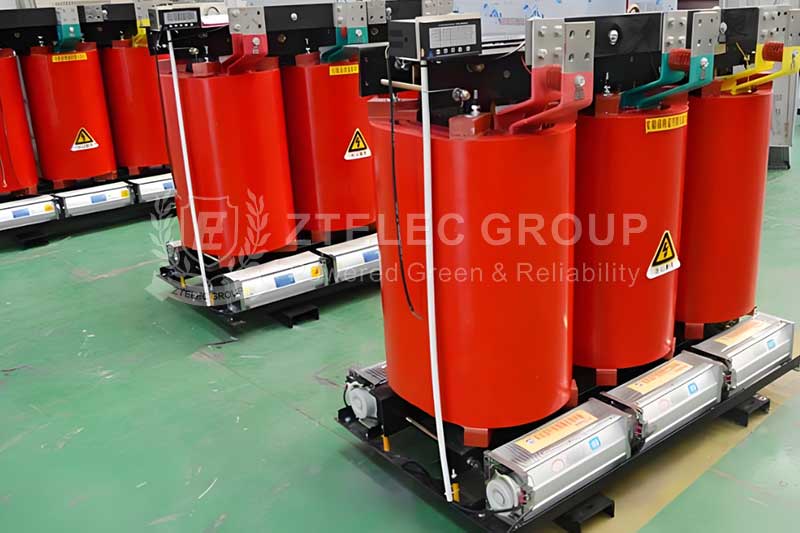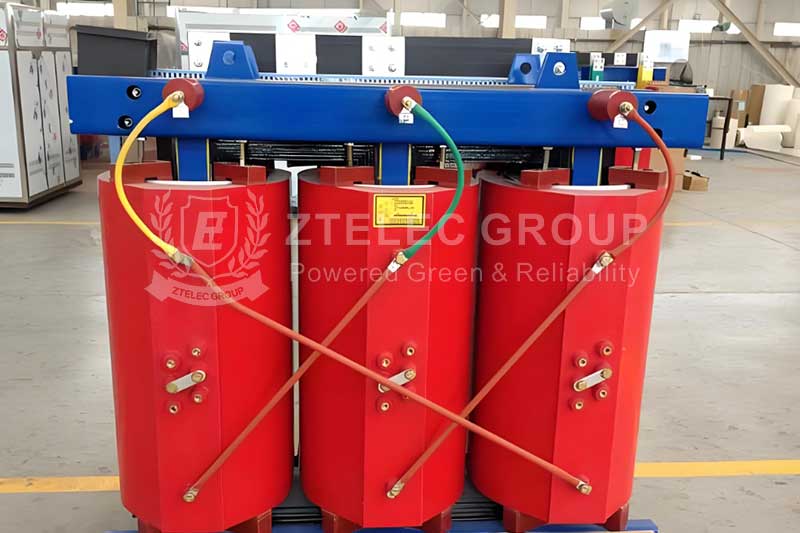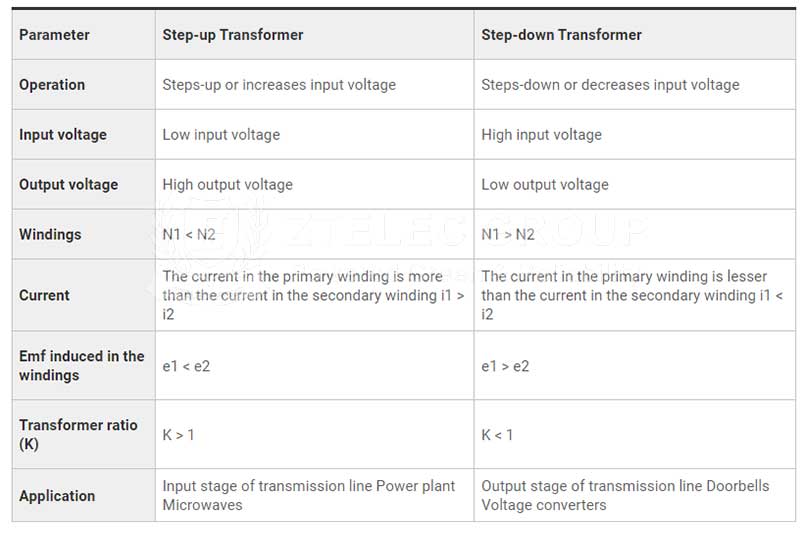A transformer is a static device that transfers alternating electricity from circuit to circuit at the same frequency, but the voltage level usually varies. For economic reasons, electrical energy must be transmitted at high voltage while it must be used at low voltage from a safety point of view. This increase in transmission voltage and reduced voltage for use can only be achieved using the step-up transformer and step-down transformer.

What are step-up transformer and step-down transformer?
A step-up transformer is a type of transformer that converts the low voltage (LV) and high current from the primary side of the transformer to the high voltage (HV) and low current value on the secondary side of the transformer. The reverse of this is known as a step-down transformer.
The basic working principle of the step-up transformer and the step-down transformer is the same, which realizes the voltage transformation through the principle of electromagnetic induction. Both step-up transformers and step-down transformers use the principle of electromagnetic induction to generate electromotive force in the iron core through the changing magnetic field, thus generating current in the winding and realizing the rise and fall of voltage. The step-up transformer increases the input voltage and the step-down transformer lowers the input voltage.

What are differences between step-up transformer and step-down transformer?
1. Different working principle
The step-up transformer refers to the input voltage increased by a certain multiple of the output transformer. The principle is to use the nature of the transformer to increase the original low voltage to the required high voltage to prevent electrical failure caused by low voltage. The step-down transformer refers to a transformer that reduces the input voltage by a certain multiple of the output, and its working principle is the opposite of the step-up transformer.
2. Different application scenarios
Step-up transformers are often used to compensate when the voltage in the circuit is too low, such as electronic equipment, television, broadcasting, etc. Step-down transformers are mainly used in household appliances, such as thermos cups, chargers, computer power supplies, etc.
3. Different output voltage
The output voltage of the step-up transformer is much higher than the input voltage, and the step-up transformer is needed if the input voltage needs to be increased from 220V to 1100V. The output voltage of the step-down transformer is lower than the input voltage, which is mainly to protect the appliance from the influence of high voltage.
The difference between a step-up transformer and a step-down transformer at a glance

Point to Remember
The same transformer can be used as a step-up transformer or step-down transformer. It depends on how it is connected in the circuit. If the input supply is supplied on the low-voltage winding, it becomes a step-up transformer. On the other hand, if the input power is supplied on the high voltage winding, the transformer becomes a step-down transformer.








Leave A Comment